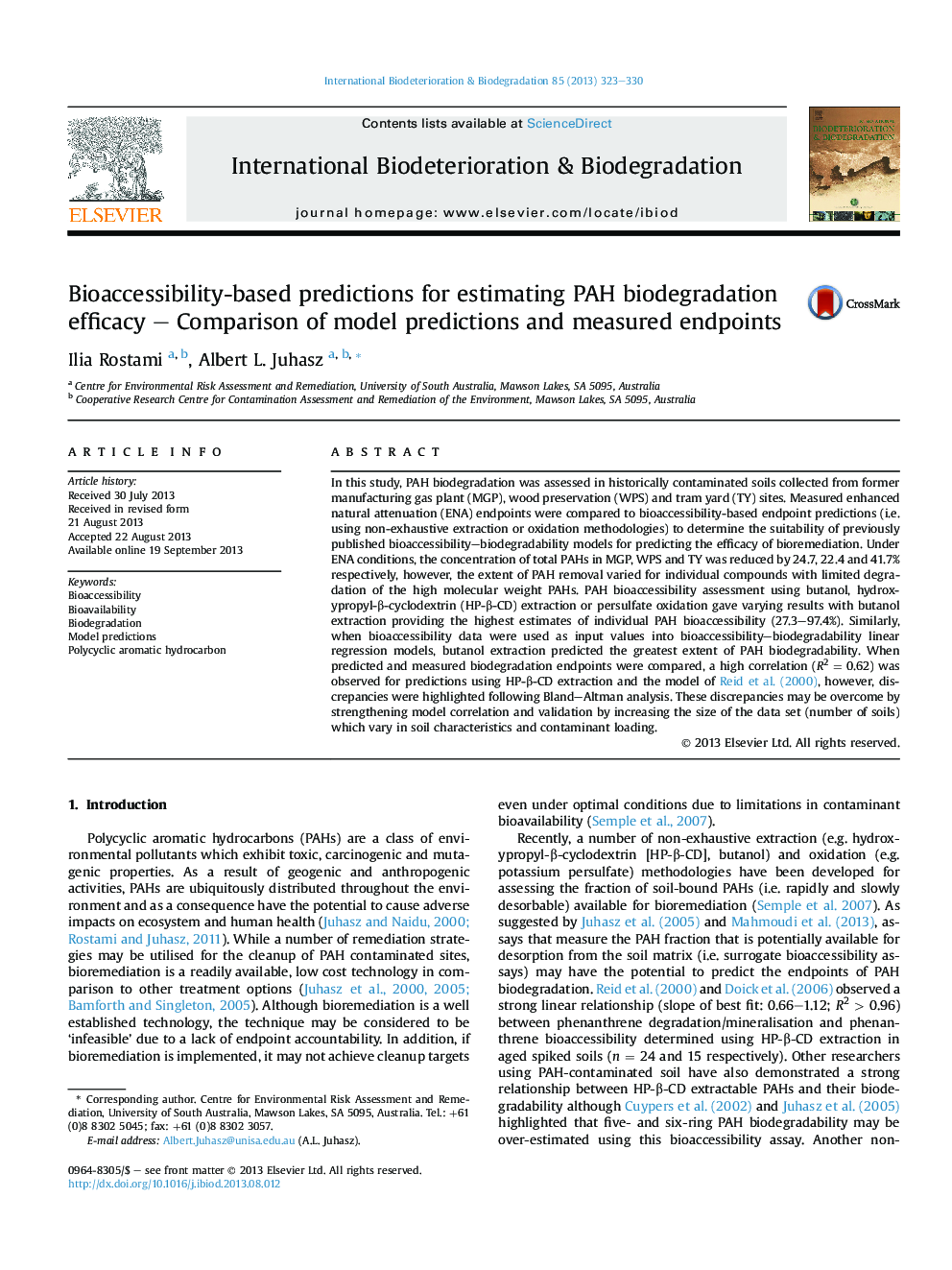| Article ID | Journal | Published Year | Pages | File Type |
|---|---|---|---|---|
| 6289317 | International Biodeterioration & Biodegradation | 2013 | 8 Pages |
Abstract
In this study, PAH biodegradation was assessed in historically contaminated soils collected from former manufacturing gas plant (MGP), wood preservation (WPS) and tram yard (TY) sites. Measured enhanced natural attenuation (ENA) endpoints were compared to bioaccessibility-based endpoint predictions (i.e. using non-exhaustive extraction or oxidation methodologies) to determine the suitability of previously published bioaccessibility-biodegradability models for predicting the efficacy of bioremediation. Under ENA conditions, the concentration of total PAHs in MGP, WPS and TY was reduced by 24.7, 22.4 and 41.7% respectively, however, the extent of PAH removal varied for individual compounds with limited degradation of the high molecular weight PAHs. PAH bioaccessibility assessment using butanol, hydroxypropyl-β-cyclodextrin (HP-β-CD) extraction or persulfate oxidation gave varying results with butanol extraction providing the highest estimates of individual PAH bioaccessibility (27.3-97.4%). Similarly, when bioaccessibility data were used as input values into bioaccessibility-biodegradability linear regression models, butanol extraction predicted the greatest extent of PAH biodegradability. When predicted and measured biodegradation endpoints were compared, a high correlation (R2 = 0.62) was observed for predictions using HP-β-CD extraction and the model of Reid et al. (2000), however, discrepancies were highlighted following Bland-Altman analysis. These discrepancies may be overcome by strengthening model correlation and validation by increasing the size of the data set (number of soils) which vary in soil characteristics and contaminant loading.
Keywords
Related Topics
Life Sciences
Environmental Science
Environmental Science (General)
Authors
Ilia Rostami, Albert L. Juhasz,
